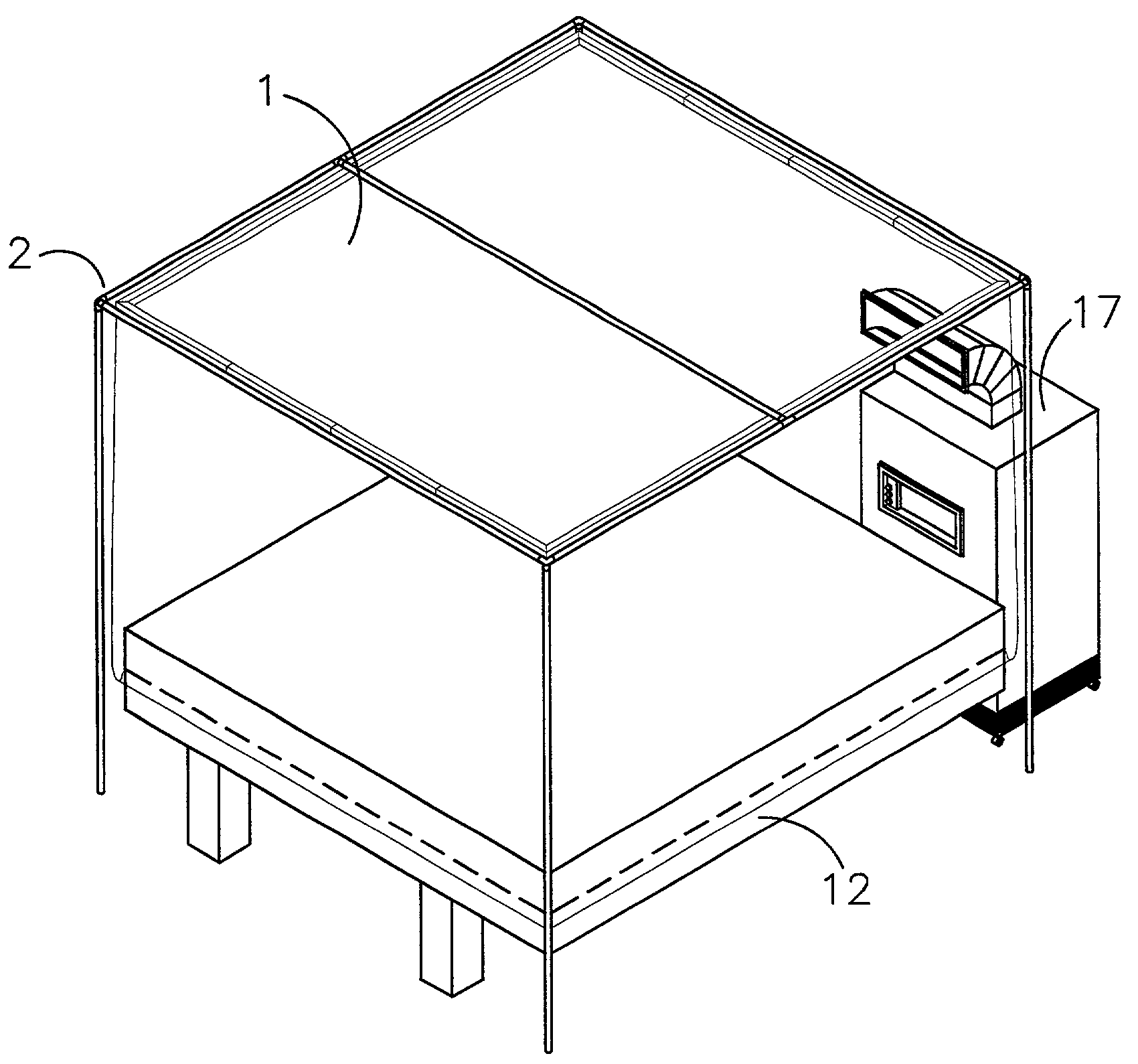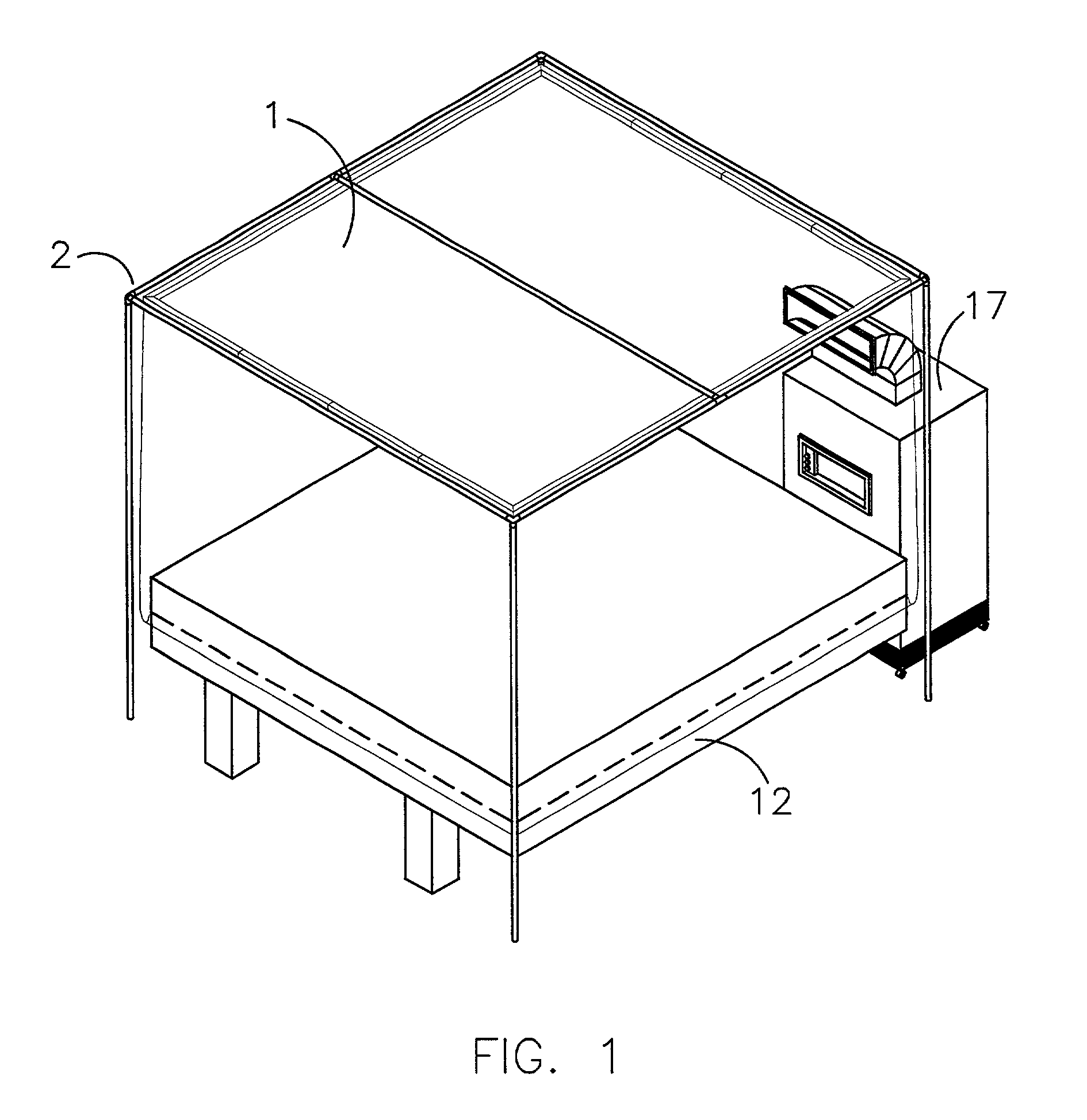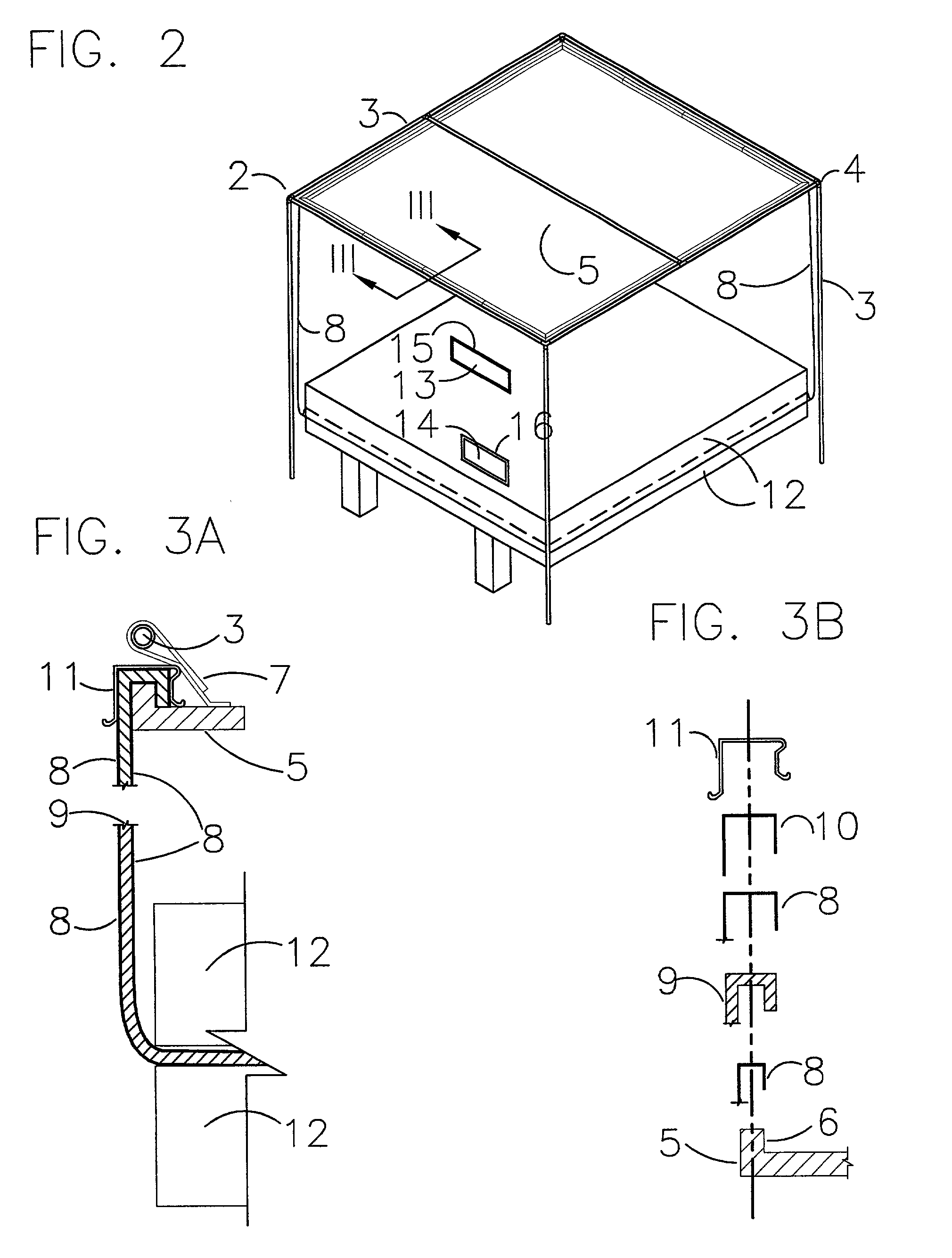Self-contained air-conditioned enclosure
a self-contained, air-conditioning technology, applied in the direction of domestic cooling apparatus, lighting and heating apparatus, heating types, etc., can solve the problems of high capital investment in addition to the cost of the air-conditioner, unnecessary extra cost of larger equipment and installation, and the portable air-conditioner cannot supply cooled fresh air but only re-circulate space air, etc., to achieve reduced initial cost, reduce operating cost, and target space cooling
- Summary
- Abstract
- Description
- Claims
- Application Information
AI Technical Summary
Benefits of technology
Problems solved by technology
Method used
Image
Examples
Embodiment Construction
[0036] Preferred Embodiment
[0037] A preferred embodiment of the Air-Conditioned Enclosure of the present invention is illustrated in FIG. 1. The Air-Conditioned Enclosure comprises of an Enclosure 1, which is structurally supported by a skeleton or Frame 2, and connected through plurality of openings to air ducts of an Air-conditioning Unit 17. The Enclosure is shown in FIG. 1 as assembled over a bed with mattress 12.
[0038] FIG. 2 shows the said Frame 2, assembled with beams, pylons or Frame Members 3, and preferably made of tubes of suitable size and material. The Frame Members 3, form a rectangular configuration and have plurality of vertical extensions or legs. In the preferred embodiment, the Frame Members are telescoping plastic tubes assembled with Corner Connectors 4. The Corner Connector 4, support and connect three of the Frame members 3, to structurally form the corner of the said Frame 2. The Corner Connector 4, is a three-dimensional socket to receive three of the said F...
PUM
 Login to View More
Login to View More Abstract
Description
Claims
Application Information
 Login to View More
Login to View More - R&D
- Intellectual Property
- Life Sciences
- Materials
- Tech Scout
- Unparalleled Data Quality
- Higher Quality Content
- 60% Fewer Hallucinations
Browse by: Latest US Patents, China's latest patents, Technical Efficacy Thesaurus, Application Domain, Technology Topic, Popular Technical Reports.
© 2025 PatSnap. All rights reserved.Legal|Privacy policy|Modern Slavery Act Transparency Statement|Sitemap|About US| Contact US: help@patsnap.com



